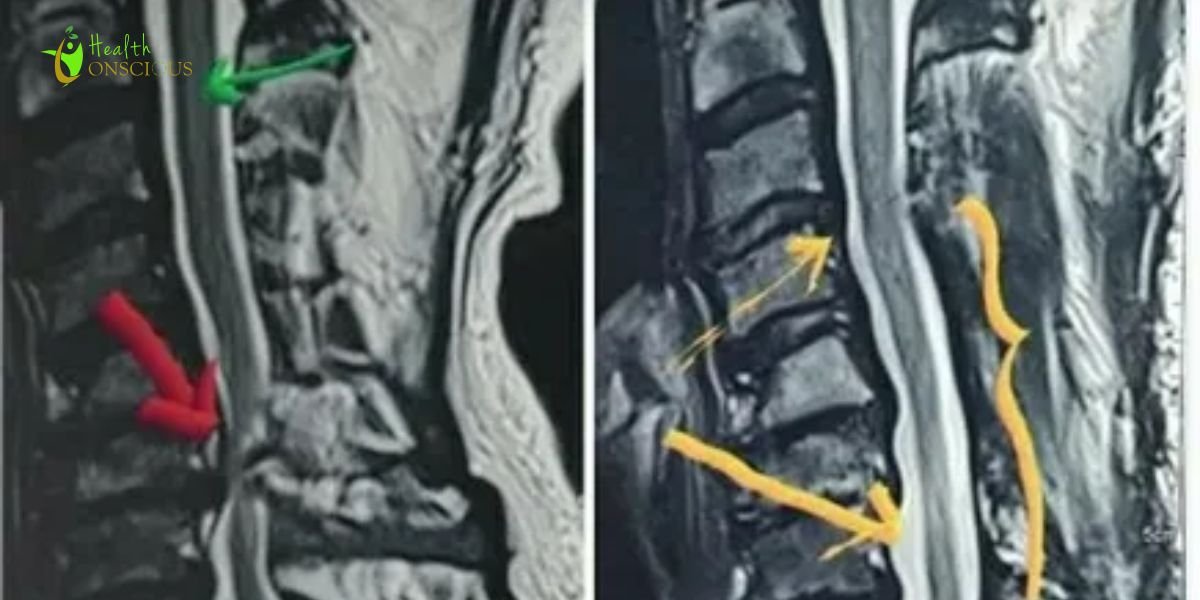Key Takeaways
- Post-laminectomy syndrome (PLS) is persistent pain after back surgery.
- It is not a reflection of a failed surgery but a complex condition with multiple potential causes.
- The syndrome affects 10-40% of patients, with symptoms ranging from back pain to neurological issues.
- Diagnosis involves a thorough physical exam and advanced imaging.
- Treatment is often non-surgical, including physical therapy, medications, and interventional procedures.
- Prevention involves careful surgical planning, choosing an experienced surgeon, and lifestyle management.
Understanding Post-Laminectomy Syndrome (PLS)
You may have seen some people continue to experience back pain even after undergoing what was considered a successful spine surgery. This may raise many questions in your mind regarding their condition. Was the surgery unsuccessful? Will the pain remain for life? Is there any treatment available for them?
Let’s start by understanding this persistent, often debilitating condition known as post-laminectomy syndrome (PLS). It’s a medical puzzle that affects a significant number of individuals each year. It is a common misconception that this means the surgery itself was a failure. In reality, PLS is a complex issue with multiple contributing factors, which can include scar tissue formation, residual nerve compression, or even a new, unrelated spinal problem.
While it’s often referred to as “failed back syndrome,” this term is considered outdated and can be misleading, as it unfairly places blame on the surgery or the surgeon. Instead, “failed back syndrome” accurately describes the outcome of a patient’s experience—the pain persists—rather than the cause. The term post-laminectomy syndrome offers a more precise description, focusing on the condition itself rather than implying a surgical error.
What is a Laminectomy?
A laminectomy is a common type of spinal decompression surgery. The procedure involves removing a portion of the vertebral bone called the lamina to relieve pressure on the spinal cord or nerve roots. This pressure, which can be caused by conditions like spinal stenosis, herniated discs, or bone spurs, is often the source of chronic back pain and radiating nerve symptoms. The goal of the laminectomy is to create more space in the spinal canal, allowing the nerves to function without compression.
What is Post-Laminectomy Syndrome (PLS)?
Post-laminectomy syndrome is a chronic pain condition that occurs after a laminectomy or other spinal surgery. It is characterized by persistent or new onset of back, neck, and/or leg pain, often lasting for more than three to six months after the procedure. It’s important to understand that this is a diagnosis of exclusion—meaning that a physician must first rule out other potential causes of the pain, such as a new injury or infection. PLS is a complex issue and requires a comprehensive diagnostic approach to determine its cause.
Post-Laminectomy Syndrome vs. Failed Back Syndrome
The terms post-laminectomy syndrome and failed back syndrome (or failed back surgery syndrome) are often used interchangeably, but there’s a subtle yet important distinction. “Failed back syndrome” implies that the surgery did not achieve its intended outcome. While this may be true for the patient’s pain, it doesn’t mean the surgery was improperly performed. A surgeon could have successfully relieved the nerve compression, yet other factors, like scar tissue or adjacent segment disease, could lead to continued pain. Therefore, many spine specialists prefer the term post-laminectomy syndrome to more accurately describe the condition without an implication of surgical failure.
Key Facts and Statistics About PLS
How Common is Post-Laminectomy Syndrome?
According to a study published by the U.S. National Library of Medicine, the prevalence of post-laminectomy syndrome can range from 10% to as high as 40% of patients who undergo spinal surgery. This wide range highlights the many variables involved, including the patient’s overall health, the complexity of the surgery, and the specific condition being treated. For patients, these statistics underscore the importance of understanding the potential risks and having realistic expectations about surgical outcomes.
Types of Post-Laminectomy Syndrome
The type of PLS is typically categorized by the region of the spine affected.
- Lumbar post-laminectomy syndrome: This is the most common form, affecting the lower back. The pain and symptoms often radiate to the buttocks and legs.
- Cervical post-laminectomy syndrome: This affects the neck area. Symptoms can include neck pain and tingling, numbness, or weakness in the arms and hands.
- Thoracic: This is the least common type, affecting the middle of the back.
Common Causes of Post-Laminectomy Syndrome
Pre-existing Conditions and Risk Factors
Several factors can increase a patient’s risk for developing post-laminectomy syndrome. Pre-existing conditions like diabetes can slow down the healing process, while lifestyle choices such as smoking can impair blood flow and tissue repair. Psychological factors, including depression, anxiety, and unrealistic expectations about the surgery, can also play a significant role in the perception of chronic pain. A surgeon’s comprehensive pre-operative evaluation should address these risks to better prepare the patient for a successful outcome.
Surgical and Post-Operative Issues
Sometimes, the cause of ongoing pain can be directly related to the surgical site or a subsequent complication. This might include:
- Incomplete nerve decompression: The surgery may not have fully relieved the pressure on the nerve root.
- Instability: The removal of bone can sometimes lead to instability in the spine.
- Infection: Though rare, a post-operative infection can cause significant pain.
- Misdiagnosis: The patient’s pre-surgical pain was not actually caused by the condition that was treated.
Scar Tissue Formation (Epidural Fibrosis)
One of the most common causes of post-laminectomy syndrome is the formation of epidural fibrosis, or scar tissue. Following any surgical procedure, the body naturally forms scar tissue as part of the healing process. In some cases, this fibrous tissue can grow around the nerve roots, compressing them and causing chronic pain. The pain from epidural fibrosis can be difficult to treat and is a leading contributor to failed back syndrome.
Recurrent Disc Herniation or Spinal Stenosis
Even after a successful laminectomy, the original problem can return. A disc can re-herniate, or spinal stenosis can re-develop due to bone regrowth. While the surgery may have been a success, these issues can lead to new pain that is similar to the pre-surgical symptoms. In these cases, the pain is not a result of the surgery itself but a new or recurring condition that requires a new treatment plan.
Recognizing the Symptoms of PLS
Persistent Back and Neck Pain
The hallmark symptom of post-laminectomy syndrome is persistent pain in the back or neck, depending on the location of the surgery. This pain can be dull and achy or sharp and stabbing. Unlike the pain before surgery, which may have been localized, this new or lingering pain can be difficult to pinpoint and can significantly affect a person’s ability to perform daily activities.
Neurological Symptoms (Numbness, Tingling, Weakness)
In addition to back pain, many patients with PLS experience neurological symptoms. These can include:
- Numbness or tingling sensations in the arms, hands, legs, or feet.
- Weakness or a “pins and needles” sensation in their extremities.
- Radiating pain (radiculopathy) that travels along a nerve pathway.
These symptoms often indicate continued nerve irritation or compression, which is why a proper diagnosis is crucial for effective treatment.
Other Symptoms and Impact on Quality of Life
The chronic pain and limited mobility associated with post-laminectomy syndrome can have a profound impact on a patient’s mental and emotional health. Many individuals with PLS report experiencing:
- Sleep disturbances and insomnia
- Anxiety and depression
- Reduced ability to work or engage in hobbies
- A general decrease in their overall quality of life
Diagnosing Post-Laminectomy Syndrome
The Role of a Thorough Physical Exam
Diagnosing post-laminectomy syndrome begins with a comprehensive physical exam and medical history review. A spine specialist will carefully evaluate a patient’s symptoms, the location and nature of their pain, and the specifics of their prior surgery. The goal of this initial evaluation is to rule out other possible causes of pain, such as an infection, hardware failure, or a new injury.
Advanced Imaging and Diagnostic Tools
Once other causes have been eliminated, a physician will typically order advanced imaging to get a clearer picture of the spine.
- MRI (Magnetic Resonance Imaging): An MRI can reveal if there is nerve root compression from scar tissue or a new herniated disc. It provides a detailed view of soft tissues.
- CT Scan (Computed Tomography): A CT scan is excellent for visualizing bone structures and can help identify if there is any new bone growth or if the spinal hardware is intact.
- EMG (Electromyography): An EMG measures the electrical activity of muscles in response to nerve stimulation. It can help confirm nerve damage and pinpoint the specific nerve roots that are being affected.
Treatment Options for Post-Laminectomy Syndrome
Non-Surgical Treatment Options
The primary approach to treating post-laminectomy syndrome is through non-surgical methods aimed at managing pain and restoring function.
- Physical Therapy and Rehabilitation: This is a cornerstone of treatment. A physical therapist can design a customized exercise plan to strengthen core muscles, improve flexibility, and increase mobility.
- Medication Management: Pain can be managed with a variety of medications, including nonsteroidal anti-inflammatory drugs (NSAIDs), nerve pain medications (e.g., gabapentin, pregabalin), and muscle relaxants. Opioid use is generally avoided due to the risk of dependency.
Interventional Pain Management Procedures
When medications and physical therapy are not enough, a pain specialist may recommend interventional procedures.
- Epidural Steroid Injections and Nerve Blocks: Injections can deliver a potent anti-inflammatory medication directly to the source of the pain, providing significant temporary relief.
- Radiofrequency Ablation (RFA): This procedure uses radio waves to heat and deaden the nerves that are transmitting pain signals. It can provide long-lasting pain relief for specific types of pain.
- Spinal Cord Stimulation (SCS): SCS involves implanting a small device that sends mild electrical pulses to the spinal cord. These pulses interrupt the pain signals before they reach the brain, effectively replacing the sensation of pain with a more tolerable tingling feeling. This is a very common and effective treatment for failed back syndrome.
Can Post-Laminectomy Syndrome Be Prevented?
While there is no guaranteed way to prevent post-laminectomy syndrome, there are proactive steps patients can take to reduce their risk and improve their chances of a successful recovery.
Preparing Before Surgery
Before any procedure, it is vital to optimize your health. This includes quitting smoking, reaching and maintaining a healthy weight, and managing any pre-existing health conditions like diabetes. Being in the best possible physical condition can significantly aid the healing process.
Choosing the Right Surgeon and Technique
Selecting an experienced, board-certified spine surgeon is one of the most important decisions you can make. A skilled surgeon will conduct a thorough pre-operative evaluation and choose the most appropriate surgical technique for your specific condition. Don’t hesitate to ask about their experience with laminectomies and their success rates.
Lifestyle Changes to Reduce Risk
After surgery, adhering to a strict rehabilitation protocol is crucial. This includes following your physical therapy regimen, avoiding activities that put stress on your spine, and making long-term lifestyle changes to support your back health, such as proper posture and regular, low-impact exercise.
Is Another Surgery the Right Choice After Failed Back Syndrome?
Deciding on a second surgery after experiencing failed back syndrome is a significant and complex decision. It is not always the right choice. A revision surgery is most effective when a clear, identifiable problem has been found, such as a recurrent disc herniation. However, if the pain is caused by factors like scar tissue or psychological issues, a different approach—such as interventional pain management or physical therapy—may be a better option. The key is a thorough evaluation by a qualified specialist who can provide a comprehensive and personalized treatment plan.
Disclaimer
The information in this article is for educational purposes only and should not be considered medical advice. Always consult with a qualified healthcare professional for diagnosis and treatment of any medical condition.
FAQs
What is the most common cause of failed back syndrome?
One of the most common causes is the development of epidural fibrosis, which is scar tissue that forms around the nerve roots after surgery, causing new or persistent pain.
Can exercise help with post-laminectomy syndrome?
Yes, physical therapy and a structured exercise program are often the most effective non-surgical treatments. They help strengthen back muscles, improve flexibility, and reduce pain.
How is a diagnosis of post-laminectomy syndrome made?
The diagnosis is typically made after a thorough physical exam and the use of imaging tests like an MRI to rule out other causes of pain, such as a new disc herniation or spinal instability.
Is post-laminectomy syndrome (PLS) a permanent condition?
Not necessarily. While it is a chronic pain condition, it is manageable with a combination of treatments. Many patients find significant relief and are able to return to a more active lifestyle.
Can you get a spinal cord stimulator if you have failed back syndrome?
Yes, spinal cord stimulation (SCS) is a common and effective treatment for failed back syndrome. The device helps to mask pain signals and can provide long-term relief for many patients.



